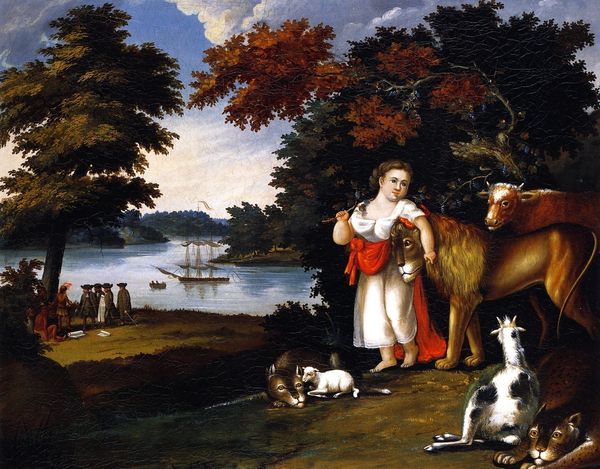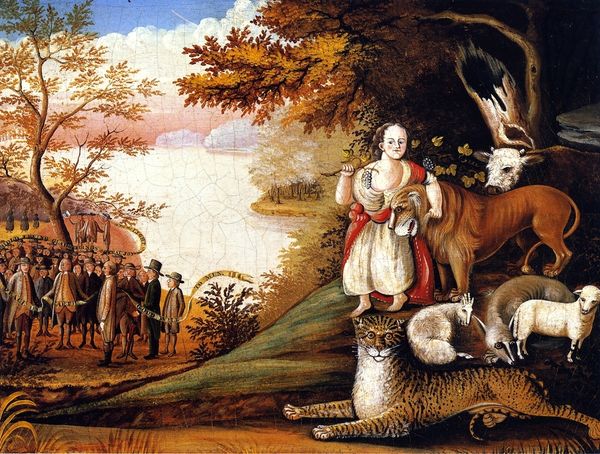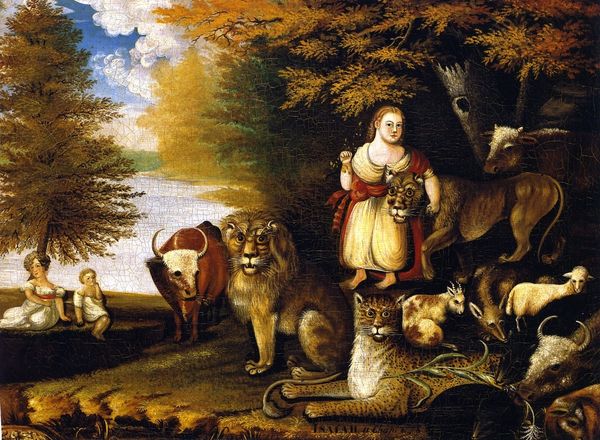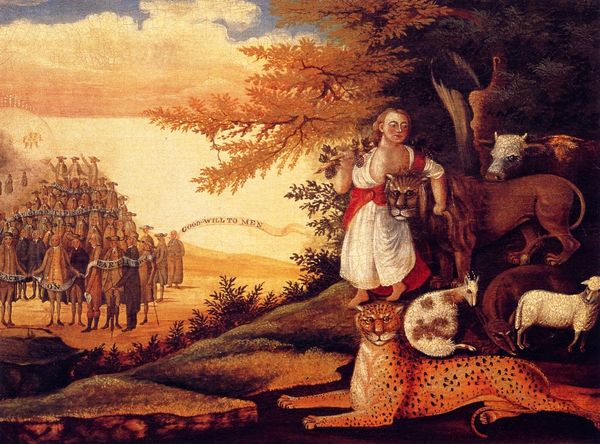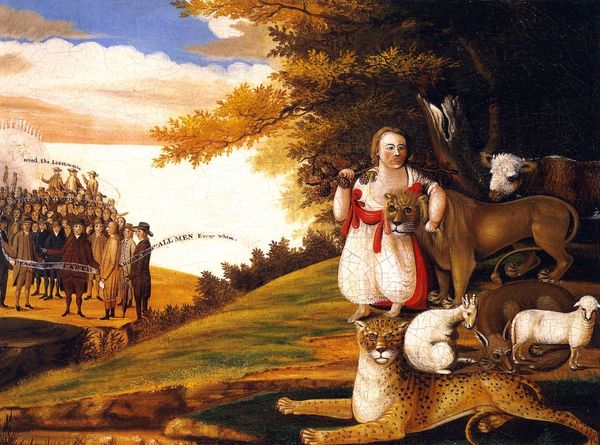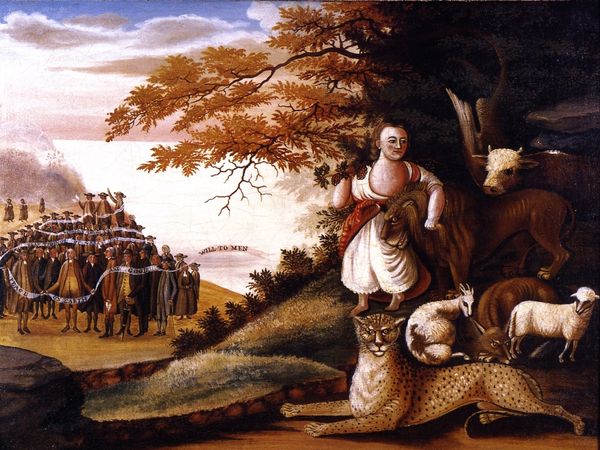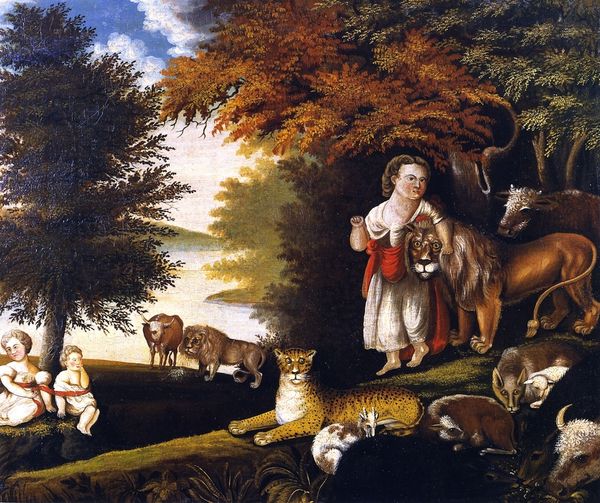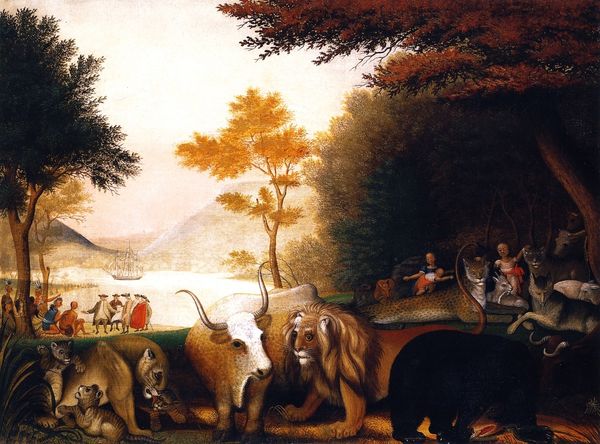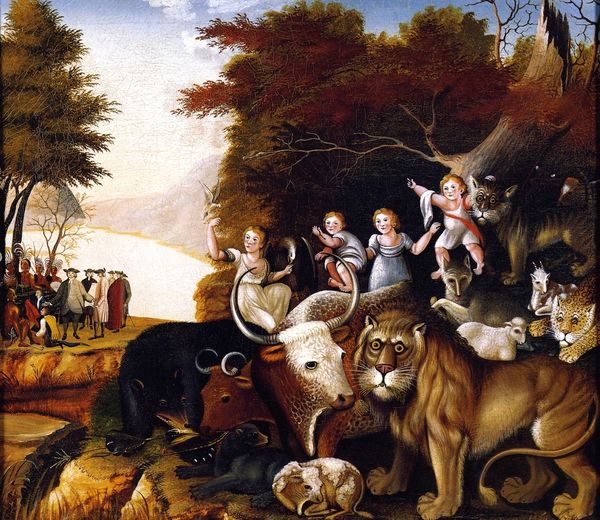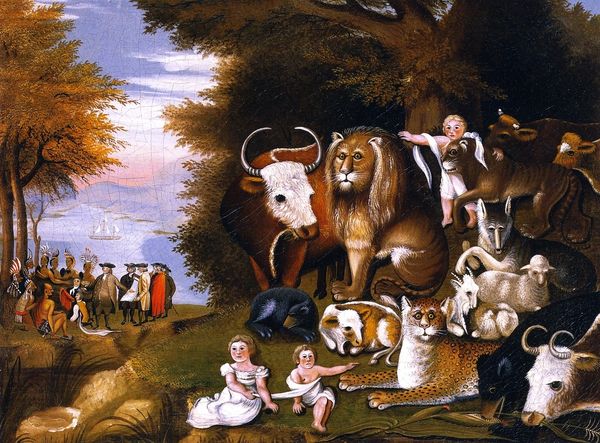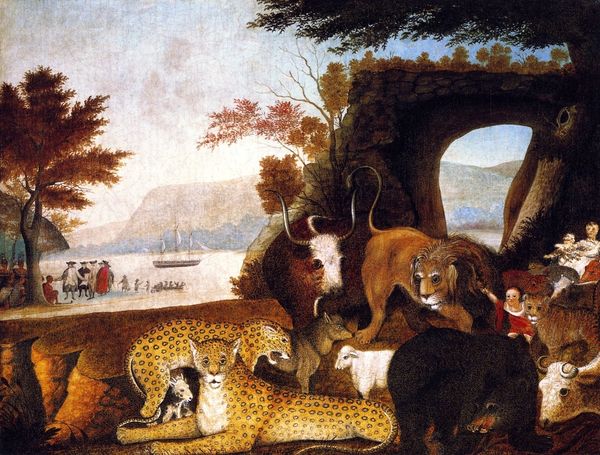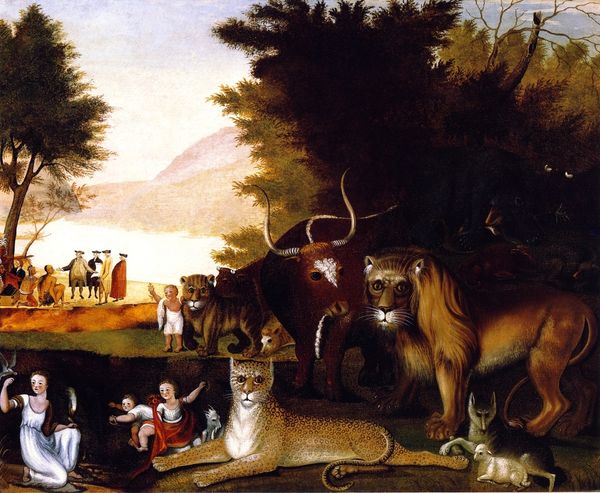
oil-paint
#
narrative-art
#
fantasy art
#
oil-paint
#
landscape
#
figuration
#
oil painting
#
romanticism
#
surrealism
#
genre-painting
#
surrealist
Copyright: Public domain
Editor: Here we have Edward Hicks’ "Peaceable Kingdom," painted in 1828, using oil on canvas. It strikes me as incredibly whimsical, this almost naive vision of harmony between different species. What do you make of this artwork? Curator: Oh, Hicks! What a delightful dance of the innocent and the symbolic! You're right; it's whimsical, but let's not mistake that for simple-mindedness. Imagine a world wrestling with industrialization, religious revivals, and the thorny issue of abolition. Then, BAM! Here's Hicks, painting his vision of peace – a visual sermon, if you will. It's not just a nice landscape; it’s a utopian dream draped in the familiar folds of a Quaker sensibility. Do you see how the figures in the background are William Penn negotiating with the Native Americans? Editor: Yes, I see the figures. So the animals are not only literal animals, but they’re also symbols? Curator: Precisely! Hicks draws directly from the Book of Isaiah, envisioning a time when the wolf dwells with the lamb. It is layered: Hicks uses familiar animals as emblems of human traits, proposing a society free from violence. And it’s more complicated than that – each painting reflects his own internal struggles with worldly success versus spiritual calling. See how the composition feels both carefully constructed and slightly off-kilter? It reflects his own personal and creative tensions. Editor: It's interesting to view what seems initially just a lovely picture through his internal tensions and historical setting! Thanks! Curator: My pleasure. These landscapes act as lovely mirrows, showing what the painter—and perhaps what all of us—deeply yearn to see and feel, when surrounded by disharmony. It invites you in and stays with you a bit.
Comments
No comments
Be the first to comment and join the conversation on the ultimate creative platform.
